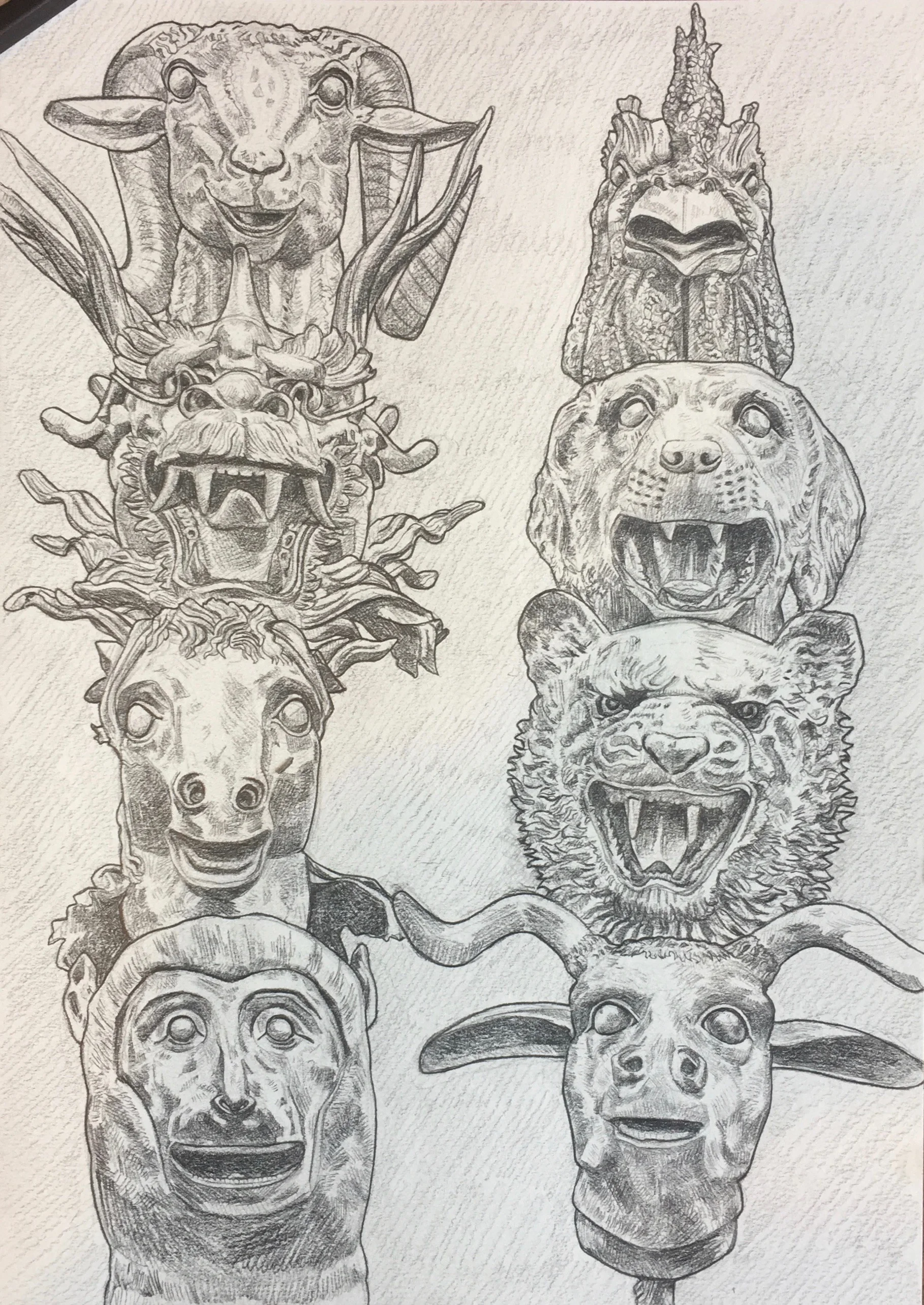I’m heading down to Brighton this week for Graphic Medicine 2019 Que[e]rying Graphic Medicine (#GM2019) this week, so today is all about finalising my presentation, and as I’ve just decided to add a sequence for it - mainly that. I figure next week’s post will be all about what happens, and what I get up to, which means today’s post is another chance to reflect on some past work.
fig.1: Sam & Tee
This time I thought I’d think about figures and faces, characters and relations, so I thought I’d flag up some illustrations I produced as the online identity for The Family Tree - a “magical realist podcast drama about family, belonging, change and identity” created by @jadamthwaite and @goosefat101.
fig.2: Clara & Jackie
The illustrations all begin as pencil drawings, with some then augmented in photoshop [fig.1 & 2]. These two images had very specific roles in the development of the series, and were both fun and a challenge, as in order to get them turned around the most efficient way was to combine drawings, but to do so in such a way to keep the feel of the series. This was an opportunity to play with the digitisation of pencil, which happily creates textured effects I like - phew!
fig.3: Nathan
The show has a sense of intrigue and mystery about it (so worth starting at the beginning if you fancy a listen). These illustration all depict characters (and in some cases actors) from the show in situations from and around the episodes.
fig.4: Ellie
The creator briefs were fun - at times including show specific stuff that seemed random, until the episode aired, at times suggesting an allusion, or sub-text they’d like me to include, and alongside all that I was free to embellish and add in my own touches (such as the books in fig.6).
fig.5: Violita
All of which meant that composing the image started to feel very much like a photograph - or film scene. Most of the images are square - to fit social media, which is an unusual angle for me, but one that began to open out space around the character, and negotiate new relationships between the character and scene. Often the angle is heightened - whether as a selfie [fig.4] (also why not a square), or an up or down shot [fig.2 & 6]. The sense of mystery comes from these compositions, but is accentuated by the tonal pencil, and the theme of shadow [fig.4 & 5 - but all of ‘em really] or echo that is built up in these images. The effect is to create a noir feeling in (mostly) ordinary spaces. I also like that you feel that, as well as you - the viewer, someone else is watching these scenes - probably just out of the corner of your eye, so you never quite catch them at it.
fig.6: Shahjahn
I really enjoyed the composition and sculpting of these illustrations - building snapshots of these characters lives. The drawings play on my love of drawing people and faces, but ask me to situate them in ways that are meaningful - the backgrounds are never neutral here. And whilst the show isn’t about medicine, which is more my normal manor - its dealing with issues of identity definitely speaks to my work on how we accept, define or resist medicine as part of our own personhood.
Oh, one final thing, the outline on the images gives a sense of sculpted reality - realistic, but also defined. The show’s magic realist tone seeks to do the same, reality with a twist - perhaps - I don’t wanna say too much, but y’know… listen…
(P.S. - I hope these link works, I tried to embed ‘em - if not, that is the website, so do the cut and past, or manual, thing - ta)







![fig.1: The Wasteland [pencil on paper]](https://images.squarespace-cdn.com/content/v1/521735b4e4b0563499dc8f68/1561961312490-HZMSBDJ1ZRL7Z1MNWFL9/scrapyard+contrast+copy.jpg)
![fig.2: YHA Boggle Hole [ink on paper]](https://images.squarespace-cdn.com/content/v1/521735b4e4b0563499dc8f68/1561961499796-Q0XGDSWNBB8YI212YDGR/yha+boggle+hole.jpg)
![fig.4: Kendal Castle [pen on paper]](https://images.squarespace-cdn.com/content/v1/521735b4e4b0563499dc8f68/1561961478396-TH7AGO96IQQZ7N5B67TO/IMG_6183.jpeg)
![fig.3: Shaftesbury Theatre [pen on paper]](https://images.squarespace-cdn.com/content/v1/521735b4e4b0563499dc8f68/1561961368993-CTRKHC66HL19RTBF8R2Z/IMG_6160.jpeg)
![fig.5: Sixty-Sixty Sounds [blue pencil on paper]](https://images.squarespace-cdn.com/content/v1/521735b4e4b0563499dc8f68/1561961440508-6OBCEOUS1CCXAT2S6Q05/IMG_5748.JPG)
![fig.6: Spring Cottage [pen on paper]](https://images.squarespace-cdn.com/content/v1/521735b4e4b0563499dc8f68/1561964129776-AGUIBC1VS82H5P06VMN8/IMG_8141.jpg)























